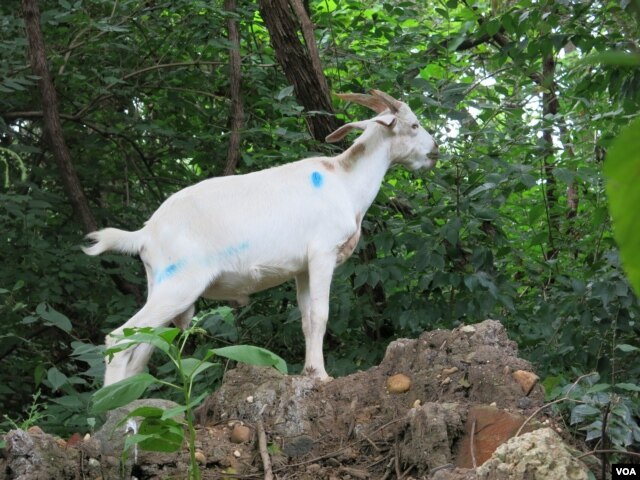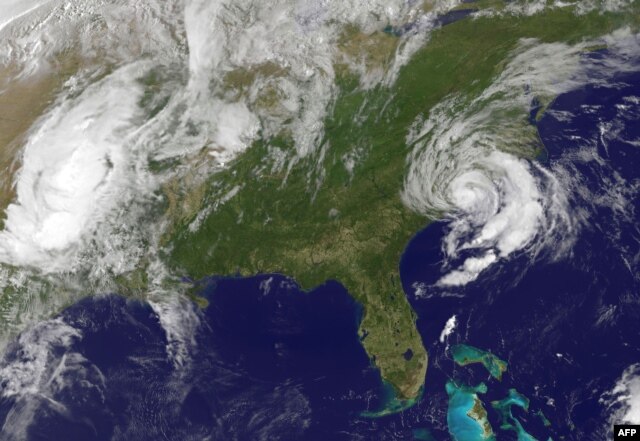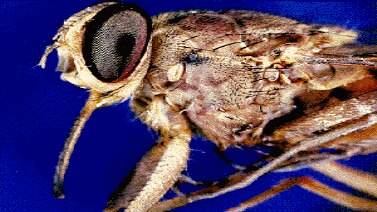
Welcome to the Health & Lifestyle report from VOA Learning English.
It is not a secret that spending time outdoors is good for our health. The more we learn about the benefits of being in nature, the more sense it makes to get outside.
This could be especially important for school children.
New research suggests that kids may learn better when they are surrounded by greener spaces. Green spaces are spaces filled with vegetation – like trees, flowers and other plants.

But these days, outdoor time is competing for a child’s attention with indoor activities. Children may find it difficult to resist computers, television and electronic games.
So, in many parts of the world children are spending less and less time outdoors. All this indoor activity can hurt a child’s physical and mental health.
But can it affect how well they do in school? Researchers in Barcelona, Spain and in the United States are trying to answer that question.
The study of the enviroment on health
Doctor Payam Dadvand works at the Centre for Research and Environmental Epidemiology in Barcelona. He and his team study how the environment affects health. The researchers wrote that, “Approximately one half of the world population lives in cities, and it is projected that by 2030, three of every five persons will live in urban areas worldwide.”
Dr. Dadvand and his team studied more than 2,600 children from 36 schools in the city. The kids were seven to 10 years old. The researchers used information from satellites to learn how much green space surrounded each school.
Over one year, the children took computerized tests four times. The tests measured memory and attention span.
The researchers then created mathematical models to compare the amount of green spaces around the schools with the test scores.
The researchers found that the children with higher contact with green space had better ability to memorize. They were also more attentive. The team believes that good air quality is the main reason for the results. More trees means less air pollution.
Scientist Jordi Sunyer also worked on the study. Mr. Sunyer says that schools surrounded by greenery had less air pollution in the classrooms. So, it seems it’s not just outdoor time that is good for children but outdoor time surrounded by clean air.
"What these data are telling us is that a way to manage air pollution in the cities is increasing vegetation in the schools."

However, some experts question the use of satellite images to determine the amount of green space.
Satellite images would not show if the green spaces are actually useable, such as playgrounds and parks. Also, satellite images would not show if children actually come into contact with the green spaces.
Other experts say this study does not consider other factors that may play a part in a child’s learning environment.
The Massachusetts study
But the findings of the Barcelona study seem to support a six-year study on elementary schools in the U.S. state of Massachusetts.
Researchers there studied students at 905 schools from 2006 to 2012. They found that students in schools that had more green spaces scored higher on standardized testing in English and math.
The researchers in the Massachusetts study used more factors than the Barcelona study -- factors such as race, gender, English as a second language, parent income, student-teacher ratio and school attendance.
The question of how green spaces affect learning is a new one.
Lisa Freund is an expert in child psychology for the National Institute of Child Health and Human Development. She says more studies are needed to learn why vegetation in and around schools improves mental ability.
"There's something about being out in nature that can be very supportive of the human. But do we need the actual greenery around us? Do we just need pictures? We don't know."
The Barcelona researchers published their study in the journal Proceedings of National Academy of Sciences. The Massachusetts researchers are from several universities in the United States and Taiwan. Their research can be found in PLOS ONE.
And that’s the Health & Lifestyle report from VOA Learning English.
I'm Anna Matteo.
Maia Pujara reported this story for VOA News from Washington, D.C. Anna Matteo adapted it for Learning English and added additional information about the Massachusetts study. Caty Weaver was the editor.
Words in This Story
vegetation – n. plants in general : plants that cover a particular area
environmental epidemiology – a field of science concerned with the discovery of how environmental exposures add to or protect against injuries, sicknesses, developmental conditions, disabilities, and death
data – n. facts and statistics collected together for reference or analysis
attention span – n. the length of time during which someone is able to think about or remain interested in something
factor – n. something that helps produce or influence a result : one of the things that cause something to happen





